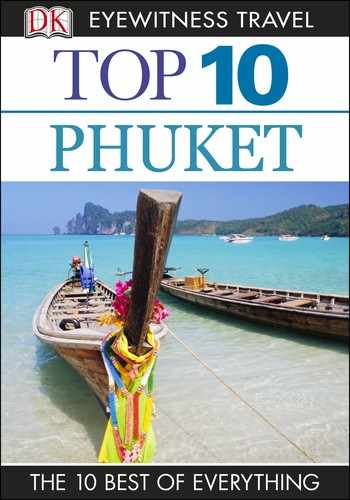Moments in History
1. 1st Century BC–AD 2nd Century: Earliest Records
Phuket was founded by Indian merchants, with trade dating back to the 1st century BC. It was later mentioned by the Greek geographer Ptolemy, who referred to it as “Junk Ceylon,” a “cape” en route to the Malaysian peninsula.
2. AD 1500–1700: Tin Seekers
Tin defined Phuket’s economy for hundreds of years. The Dutch established a strategic trading presence in Phuket after it was discovered that the island had vast tin reserves. The English and French followed shortly after, and the Siamese King Narai (r.1656–88) granted France monopoly in 1685.
3. AD 1688: French Expulsion
After the Siamese revolution of 1688, in which the pro-foreign Siamese King Narai was overthrown, the French were ordered out of Siam. The French, under General Marshal Desfarges, captured Phuket in an attempt to reassert influence in Siam in 1689, but the occupation of the island was futile.
4. March 13, 1785: Burmese Invasion Repelled
Led by two sisters – Thao Thep Kasattri and Thao Srisoonthorn – the Siamese defended Phuket against a month-long Burmese attack. Francis Light, an English ship captain, had alerted Phuket of assembling Burmese forces, giving the army time to prepare.
5. Early 19th Century
Lured by Phuket’s flourishing tin mines, and to escape poverty in their own country, thousands of Chinese workers immigrated to the island during the early 1800s, establishing communities and customs that define Phuket to the present day. Chinese shrines, architecture, and festivals are among the legacies of the era.
6. 1876: Tin Worker Rampage
A group of migrant Chinese tin workers, disgruntled over their wages and difficult living conditions, instigated a violent uprising on Phuket, causing local residents to flee to Wat Chalong for protection. The temple’s monks sheltered the people and eventually helped restore calm to the island.
7. 1933: Phuket Province
During the reign of King Rama V (r.1867–1910), Phuket solidified its role as the administrative center of the southern provinces. The island was, however, only a rural subdivision at the time. It became a full province in 1933 after the country shifted from an absolute monarchy to a parliamentary government.
8. 1970s: Phuket Discovered
Although the island had been a hotbed of international economic activity for centuries, some still claim that Phuket was discovered by Western backpackers in the 1970s. It is true, however, that the revival in travel during this decade led to the first substantial tourism infrastructure, such as a Club Med resort and regular THAI Airways flights.
9. 2000: The Beach Filmed
Visitors had been flocking to Thailand’s white-sand beaches long before this Hollywood film was made, but there was something about seeing the perfect beach on the silver screen that captured the audiences’ imaginations. With global travel on the rise, large numbers of travelers visited Maya Bay (for further details see The “Perfect Beach”).
10. 26 December 2004: Indian Ocean Tsunami
The devastation caused by the tsunami was immense – thousands of lives lost in a matter of minutes. In Thailand, the tsunami represented the worst natural disaster in history, leaving some 8,000 people dead. Busy merchant streets became lethal rapids, and everything on Ko Phi Phi was essentially washed away.
